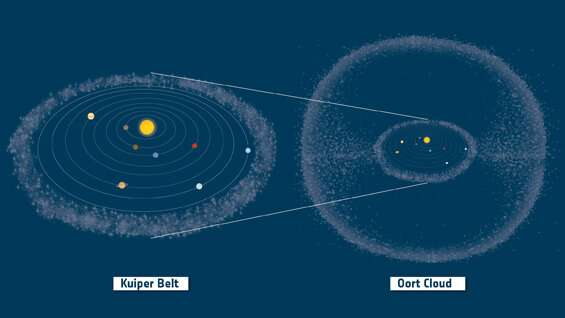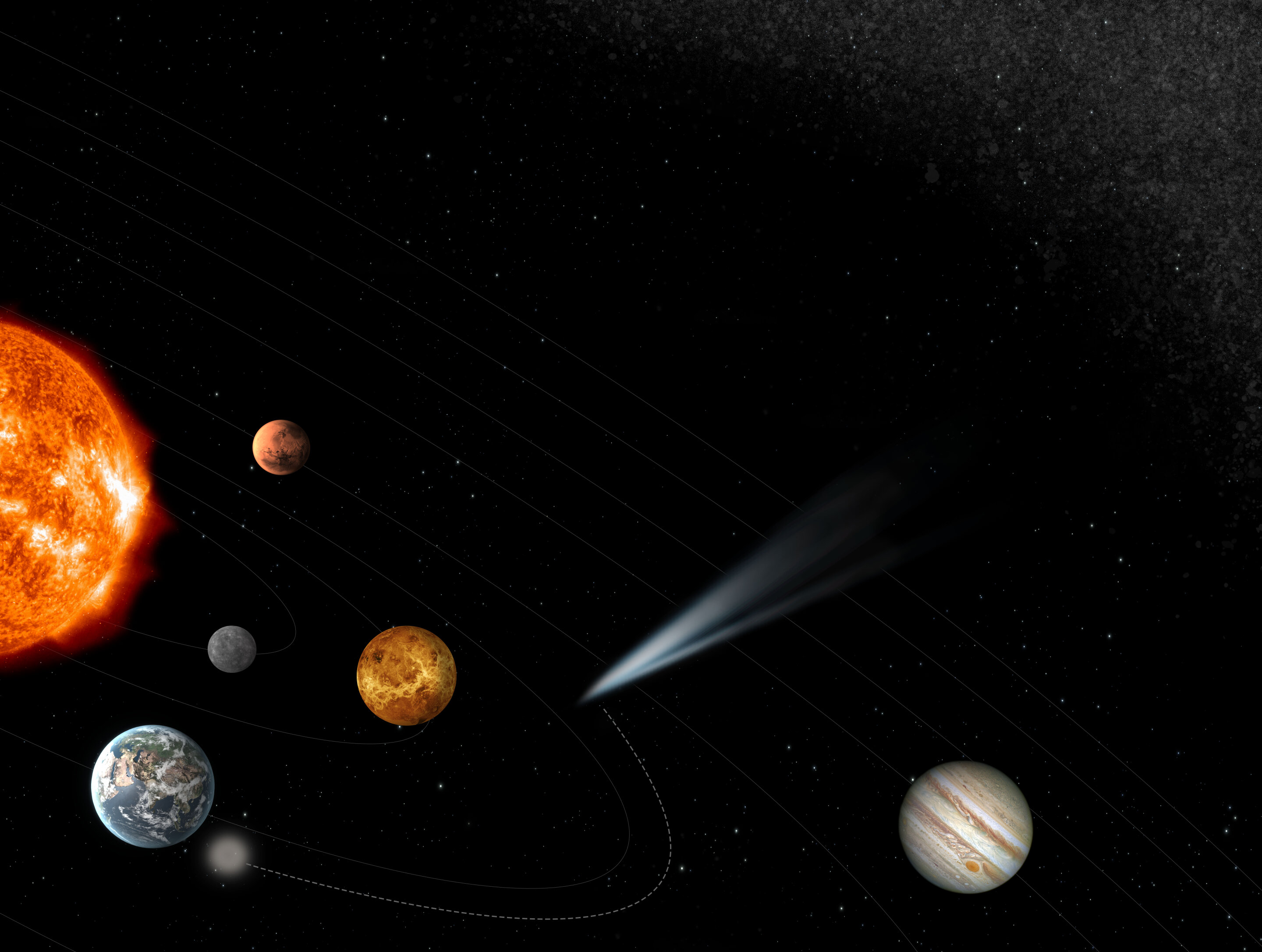ESA and OHB have signed a contract to maneuver ahead with the design and building of ESA’s bold Comet Interceptor spacecraft, deliberate for launch in 2029.
In contrast to different missions, Comet Interceptor’s goal has not but been found. That is as a result of it might take too lengthy to construct a mission on the brief timeframe of a possible goal coming into the solar system for a spacecraft to achieve in time.
As a substitute, Comet Interceptor can be prepared and, except an acceptable goal is recognized earlier than launch, ready 1.5 million km “behind” Earth as considered from the sun (on the gravitationally secure Lagrange level 2) for an acceptable comet and even an interstellar object to enter the internal solar system for the primary time.
Maybe hailing from the huge Oort Cloud of comets that encompass the solar system, Comet Interceptor’s goal is not going to have undergone the identical “processing” as comets on shorter orbits resembling these visited by ESA’s pioneering Giotto and Rosetta missions. As such the goal could comprise treasured materials surviving from the time when the sun and planets shaped 4.6 billion years in the past.
“Comet Interceptor’s ground-breaking goals embrace characterizing the surface composition, form and construction of a pristine comet for the primary time ever and sampling the composition of its gasoline and dust coma,” says Michael Kueppers, ESA’s Comet Interceptor research scientist. “Getting access to this materials is important for understanding our origins, when it comes to how our solar system shaped and advanced over time.”
As soon as an acceptable comet or interstellar object is recognized, Comet Interceptor can be deployed from its parking orbit to intersect its trajectory. The mission contains three modules: a major spacecraft and two probes. They’ll separate a number of days previous to intercepting the comet to carry out simultaneous observations from a number of angles, creating an distinctive 3D profile of the comet or interstellar object.

ESA is main the event of the principle spacecraft and one of many probes, each carrying completely different however complementary devices constructed by European scientific institutes and trade. JAXA, the Japan Aerospace Exploration Company, is offering the opposite probe and its devices.
“Comet Interceptor is an bold mission that requires a singular spacecraft—three novel spacecraft in truth—and after an intensive research and planning phase we’re prepared to begin constructing the European parts,” says Nicola Rando, ESA’s Comet Interceptor undertaking supervisor.
“European scientists, engineers and flight operators are set to strengthen their positions as leaders in all elements of cometary exploration as we take this necessary step in constructing ESA’s subsequent iconic comet mission,” says ESA Director of Science Günther Hasinger.
The signing of the contract was celebrated between ESA and OHB with a small ceremony at ESA Headquarters in Paris on December 15.
Comet Interceptor was proposed to ESA in July 2018 and chosen in June 2019. It’s an instance of a “quick” improvement or F-class mission. Comet Interceptor is foreseen for launch as co-passenger with ESA’s exoplanet-studying Ariel spacecraft in 2029.
Supplied by
European Space Agency
Quotation:
Comet Interceptor building strikes ahead (2022, December 16)
retrieved 16 December 2022
from https://phys.org/information/2022-12-comet-interceptor.html
This doc is topic to copyright. Other than any honest dealing for the aim of personal research or analysis, no
half could also be reproduced with out the written permission. The content material is offered for info functions solely.





